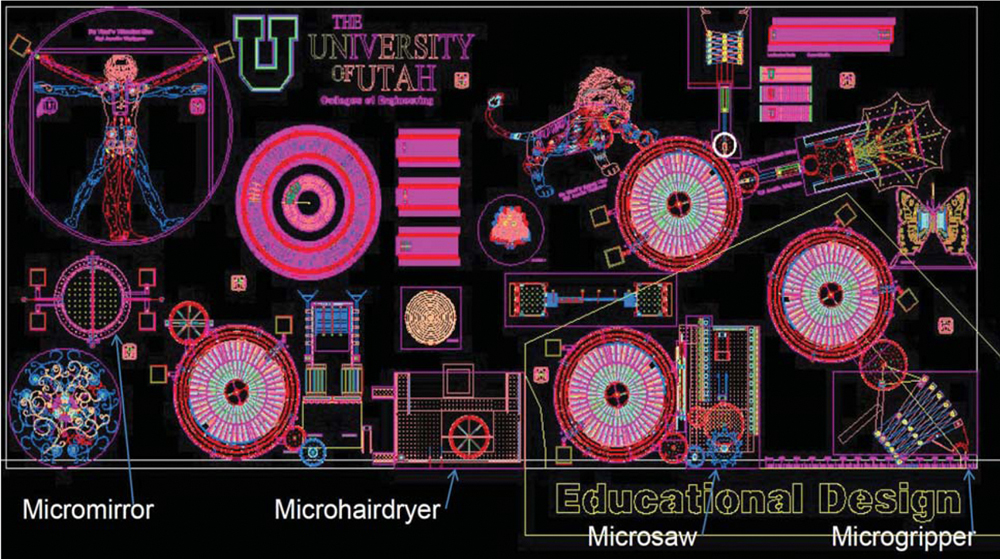New Computer Circuits Made for Extreme Conditions

Computer circuits usually have no moving parts, but that may be just the thing that keeps them running in extreme environments.
A team at the University of Utah has invented a microcircuit that is able to stand high levels of ionizing radiation. It's called a micro-electro-mechanical system, or MEMS. Ordinary computers are made with semiconductors in which the "on" or "off" state is controlled by the current in the circuit. In a MEMS, the current is used to move electrodes. The electrodes are separated by a physical gap, and only touch each other when there is enough current to create an attractive force between them. It is essentially a physical switch, about 25 micrometers on a side.
Ordinary computer chips can't stand too much radiation or heat. For example, some of the robots that had to enter the Fukushima nuclear power plant in Japan during the disaster there last year failed because the radiation fried their circuits. Satellites have to be equipped with shielding because the radiation form space can cause failures in their systems. The only way to prevent this is to use semiconductors that resist radiation — an expensive option — or shield them with metals such as lead.
The reason for this is the nature of semiconductors; any radiation creates current in the semiconductor — it's how photovoltaic cells work — and if there is enough, it will switch "on." That closes the circuit in the tiny switches that make up computer chips and can disrupt the normal functioning of a circuit.
A MEMS doesn't have that problem because there are no semiconducting channels. By the time there is enough electromagnetic radiation or radioactivity to create a current in the switch, odds are the whole thing will have melted. "If we built a robot with this in it, there'd be some other mechanical failure," said Massood Tabib-Azar, a professor of electrical and computer engineering who led the development of the technology.
To test the robustness of the MEMS circuits, the University of Utah team put them inside a research reactor for two hours. The circuits kept working where ordinary ones would fail. The system Tabib-Azar's team built was a relatively simple one, but there is no reason the circuitscan't be scaled up in the future to build real computers.
A computer that is able to survive such conditions would make it easier to build robots that could go into hazardous areas — such as a reactor during a meltdown — or reduce the expense of building satellites by reducing the amount of shielding needed. Such circuits are of obvious interest to the military. The research was funded by the Defense Advanced Research Projects Agency, and will appear in the journal Sensors and Actuators this month.
Get the world’s most fascinating discoveries delivered straight to your inbox.
That said, there are drawbacks to MEMS. One is speed. Silicon chips are a thousand times faster than MEMS, even though one MEMS switch can replace several silicon switches. The lack of moving parts means silicon is less likely to fail under ordinary conditions. Tabib-Azar's MEMS ran for 2 million cycles without a failure, but that needs to be increased by a factor of a million to be useful for real machines. Another is size — MEMS chips are much bigger than those made with silicon.
Even though you can't build a computer as small or as fast as a conventional one this way, that isn't necessary for the kinds of applications Tabib-Azar envisions. A remotely operated robot isn't doing calculations that are that complex, nor is a satellite guidance system.
"For a robot like the ones in Fukushima, you don't need that much computational power," he said. "It's pretty simple decision-making."
This story was provided by InnovationNewsDaily, a sister site to LiveScience. Follow InnovationNewsDaily on Twitter @News_Innovation, or on Facebook.



